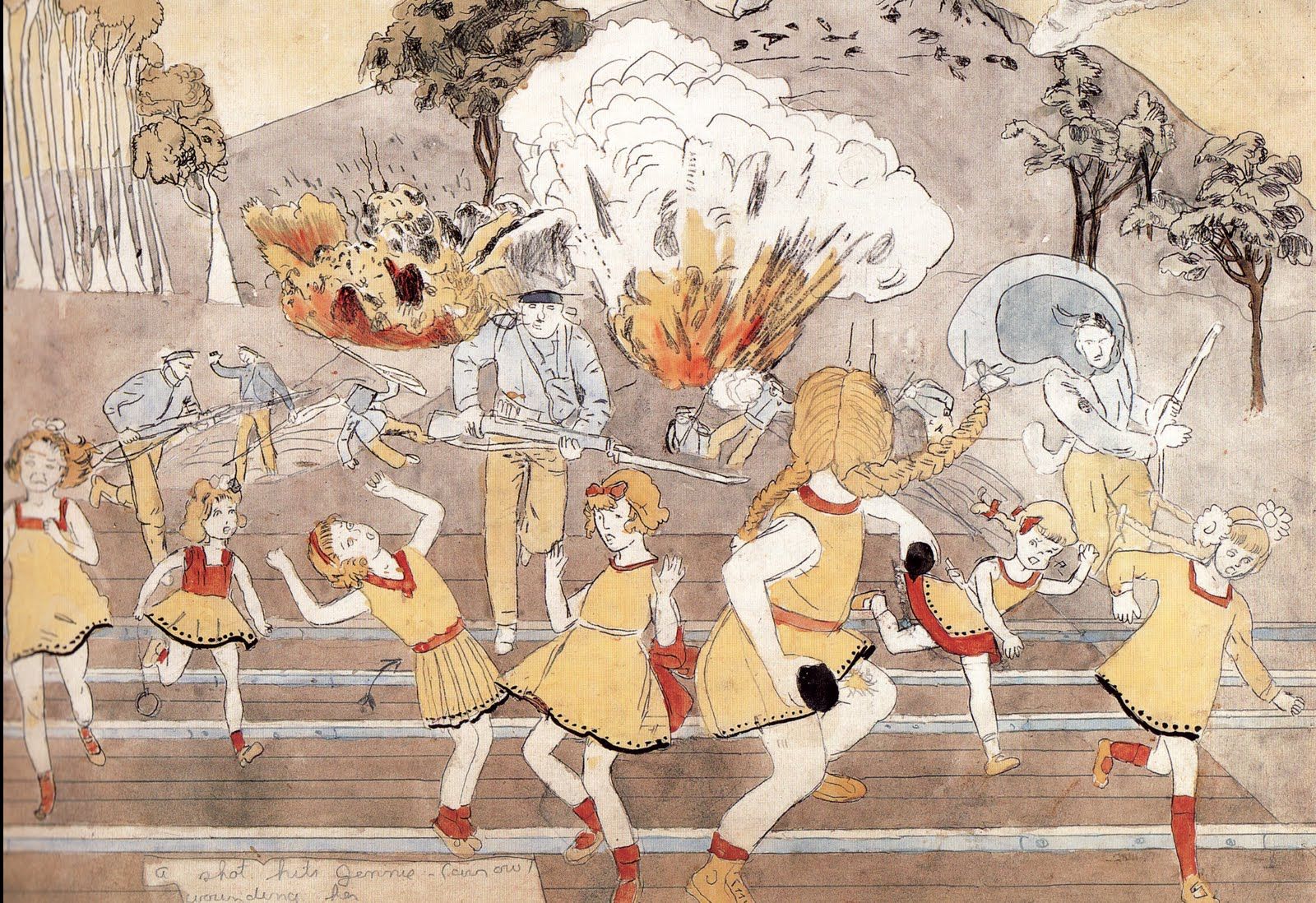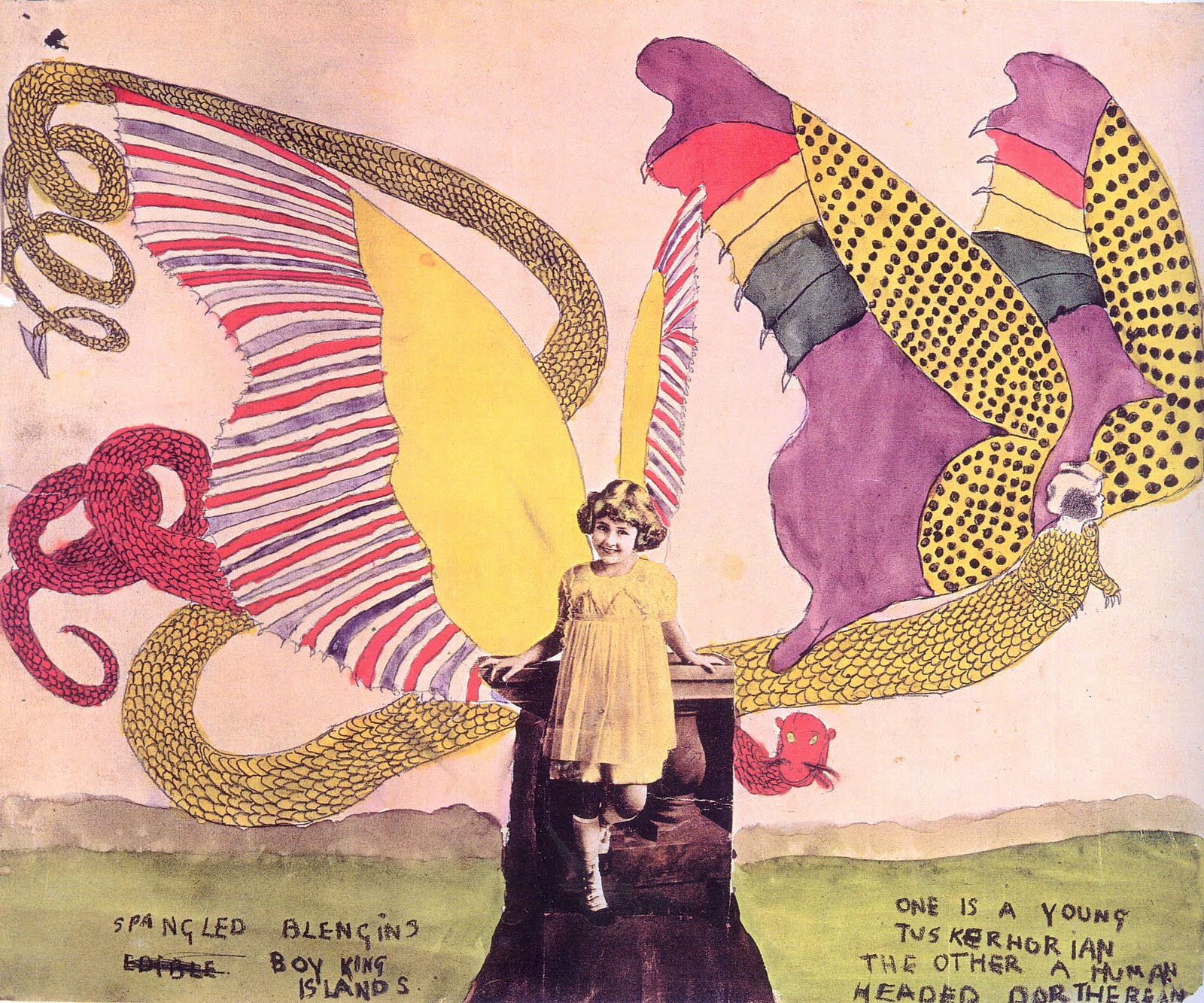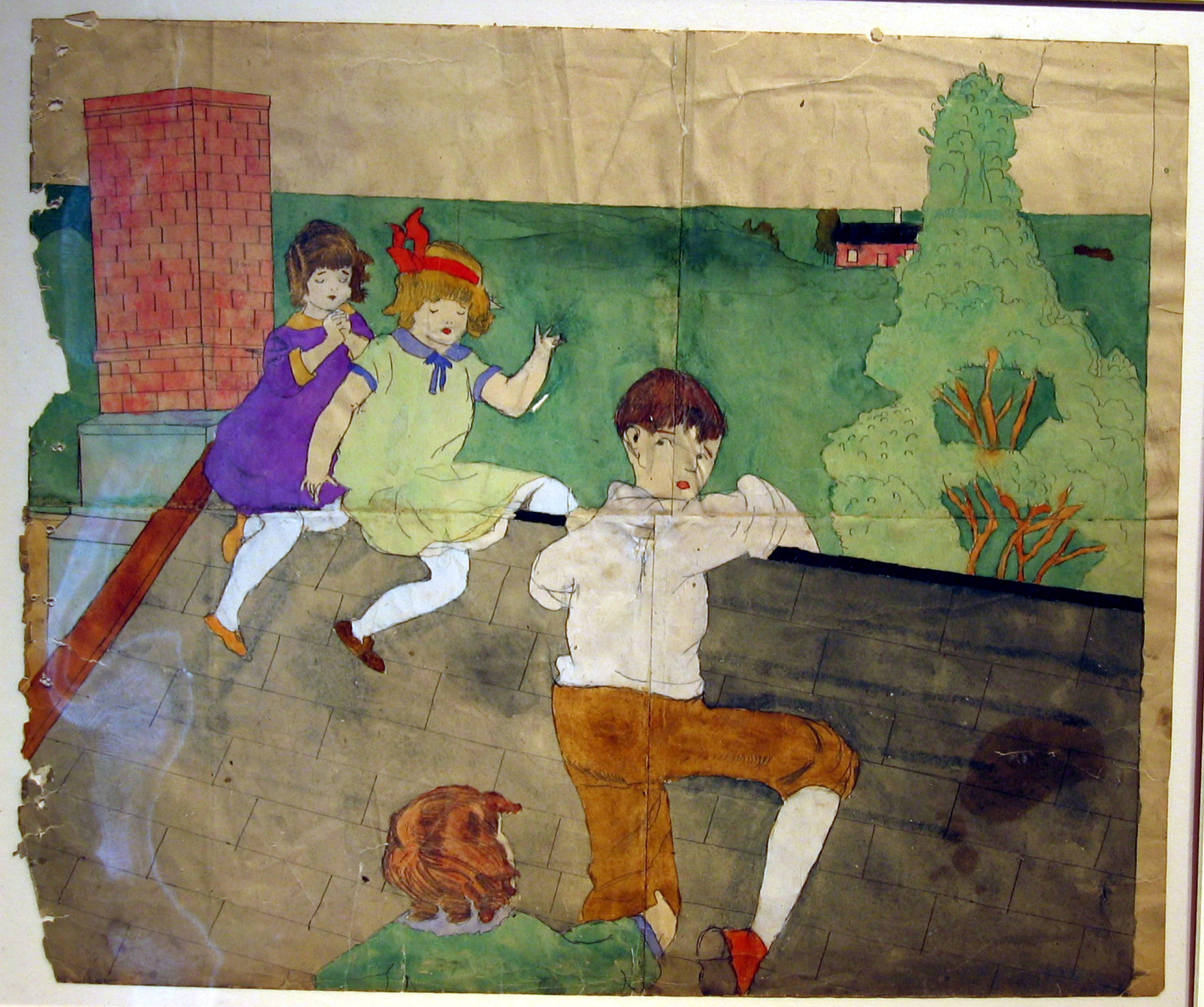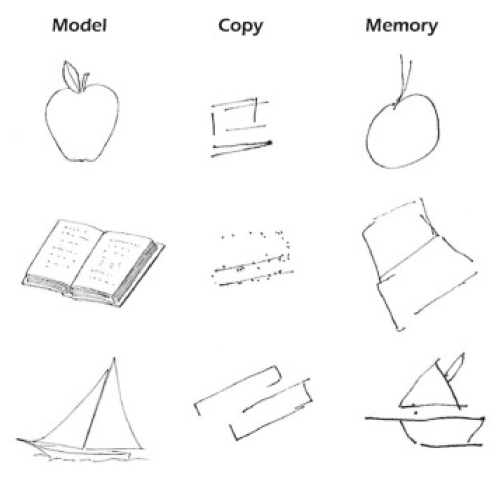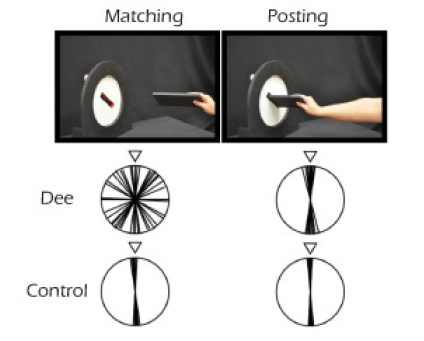The Last Psychiatrist is one of my favorite blogs, and one of the best places to learn about narcissism. This post serves as an index to narcissism-related TLP posts.
I expect that this post will be primarily useful to people who suspect they might be narcissists. If you only read one quote from this post, read this one:
It’s a mantra: narcissists don’t feel guilt, only shame.
Guilt implies an internal sense of right and wrong. [...] Narcissists don’t feel guilt – based on objective right and wrong – they feel shame – based on exposure.
You wouldn’t say you were ashamed unless you have been observed, caught. Shame is a conflict with reality: I think I’m this kind of a person, but now this other guy has external evidence that I’m not.
Table of contents (use Ctrl+F)
- What is narcissism?
- Where does narcissism come from?
- Shame and guilt and defense against change
- Development of superego / right and wrong
- “Know thyself”
- Sexuality
- More on defense against change
- What now?
What is narcissism?
The narcissist believes he is the main character in his own movie. Everyone else has a supporting role – everyone around him becomes a “type”. You know how in every romantic comedy, there’s always the funny friend who helps the main character figure out her relationship? In the movie, her whole existence is to be there for the main character. But in real life, that funny friend has her own life; she might even be the main character in her own movie, right? Well the narcissist wouldn’t be able to grasp that. Her friends are always supporting characters, that can be called at any hour of the night, that will always be interested in what she is wearing, or what she did. That funny friend isn’t just being kind, she doesn’t just want to help – she’s personally interested in the narcissist’s life. Of course she is. [...]
A comedian I can’t remember made a joke about actors in LA, but it’s applicable to narcissists: when two narcissists go out, they just wait for the other person’s mouth to stop moving so they can talk about themselves. [...]
A narcissist looks the same every day; he has a “look” with a defining characteristic: a certain haircut; a mustache; a type of clothing, a tatoo. He used these to create an identity in his mind that he will spend a lot of energy keeping up.
The worst thing that could happen to a narcissist is not that his wife cheats on him and leaves him for another man. He’ll get angry, scream, stalk, etc, but this doesn’t qualify as a narcissist injury because the narcissist still maintains a relationship with the woman. That it is a bad relationship is besides the point – the point is that he and she are still linked: they are linked through arguing, restraining orders, and lawyers, but linked they are. [...]
The worst thing that could happen to a narcissist is that his wife cheats on him secretly and never tells him, and she doesn’t act any differently towards him, so that he couldn’t even tell. If she can do all that, that means she exists independently of him. He is not the main character in the movie. She has her own movie and he’s not even in it. That’s a narcissistic injury. That is the worst calamity that can befall the narcissist.
Any other kind of injury can produce different emotions; maybe sadness, or pain, or anger, or even apathy. But all narcissistic injuries lead to rage. The two aren’t just linked; the two are the same. The reaction may look like sadness, but it isn’t: it is rage, only rage.
Narcissists appear to have emotions, feelings, empathy – they cry, laugh, feel your pain, etc – but none of this is real. They don’t feel it. It’s not linked to anything internal. They’re crying at the funeral, for sure, but on the inside they’re wondering why it doesn’t hurt as much as they think it should. They’re proud at their daughter’s ballet recital, but not actually proud, inside they’re wondering about their promotion, or that jerk at the store, etc. He may feel pride that she’s his daughter, but not empathy, nothing about her as a separate person.
[...] Narcissists don’t feel guilt – based on objective right and wrong – they feel shame – based on exposure. When they get caught, they’re answer is always the same: “wait, that’s not really who I am...”
[...] The reason a psychopath kills is because he is bad. The reason a narcissist kills is so that no one finds out he is bad.
Narcissism is not grandiosity
“Looks like you were right, even the popular press is catching on to the increase in narcissism—” [...] These articles aren’t saying narcissism is on the rise, they are saying grandiosity is on the rise. They are conflating the two. Even psychiatrists get this wrong, they are not the same.
Leave aside for now what is the distinction. Look instead at the result: by focusing on the grandiosity, it leaves you, the reader, with an out. “Look at these grandiose idiots. That’s not me.” By virtue of the fact that you aren’t famous, important, grandiose, you must therefore not be a narcissist. It creates a self-satisfied sense of importance because you’re not like them. That’s narcissism. These articles actually reinforce your narcissism.
Grandiosity is only one possible manifestation of a psychic process that went awry. The essence, the defining characteristic of narcissism is the isolated worldview, the one in which everyone else is not fully real, only part a person, and only the part the impacts you.
“If it’s not grandiosity, then what is narcissism?” Shame over guilt; rage over anger; masturbation over sex; envy over greed; your future over your past but her past over her future...
Imagine what you look like to another person. Now recall what you looked like in the mirror this morning – that’s really what they see. They are making instantaneous judgments about your personality based on that mirror image. They are hearing your voice like it comes from a recording, not as you hear from your mouth. You’re the only person who experiences yourself as you do.
Narcissism has a fail-safe: since you know you tricked [your partner] to get them, you can’t believe them when they say they love you. The fact that she loves you means she’s not smart enough to know what love is. That’s why you default to measurable quantities of love: how fast did she get into bed with the past guys?
Just because she thinks you’re awesome, doesn’t mean you can really feel her.
Where does narcissism come from?
[...] Instead of asking, “why do I feel disconnected?” ask the reverse question: “what would I feel if I wasn’t disconnected?” Be specific, say the answer out loud.
Go ahead, take some time, think about it. What does connecting feel like? I’ll wait.
Let me guess: you have no idea.
All you have for an answer is images, fleeting thoughts. Nothing concrete. Some words, some phrases, bits and pieces of conversations you may have heard or that you daydreamed.
Now ask yourself, where did you get these images and phrases?
Imagine two people: real, or from TV or movies, that are in love. Pick two people whose love you’d like to emulate. Imagine them kissing, looking into each other’s eyes. Imagine them making love.
You wish you had a love like that, but you don’t, and every time you try, to get it, it is failure. Here’s the reason: are you imaging real people, or TV characters?
[...] TV taught you how to love, it showed you what love looks like, feels like. But when you’re actually in love, it doesn’t look like that, so you secretly suspect you don’t have the capacity for love, that there’s something wrong with you.
Same goes for sadness. And it’s worse when you’re in the presence of someone else’s sadness, you have no idea what to do. All you really know about experiencing these emotions is the script you got from TV. “Oh your husband died!? Oh my God, that’s terrible! I’m so sorry for you!!” But you don’t feel any of that. Nothing.
So you think to yourself, what the hell is wrong with me? This woman’s husband died – sure, I can fake it, but am I such an empty monster that I feel nothing?
Of course you feel nothing. Why would you? – it’s not your loss. What’s wrong isn’t your lack of feeling, but that you think you have to feel something, that you have to tell this woman, remind this woman, how horrible is her loss. You think the only way to connect with people is to have their emotions. You think she wants to connect with you. You think she wants your help.
The problem isn’t your lack of feeling, it is that you think that unless you feel it’s not real. You forget that she has a life that doesn’t have you in it.
What you should say is, “I’m very sorry to hear that. Is there anything I can do?” and that’s it. But that feels insufficient. You think this because you think that there is something you can do, that the sadness is not real for you so it must not be real for her and you thus have the power to change it.
She’s not looking for you to be sad, she’s not looking to you for anything, her loss is bigger than you. If she needs anything from you, it’s sympathy, not empathy.
But no one taught you this. So you fall back on the character “man helping grieving widow.” Action!
The problem isn’t that you don’t know how to connect; it’s that when you do connect at all, you don’t know what to do next. It’s your unrealistic expectations of what connecting is supposed to be. TV is always about beginnings, not middles. Like love. The love you feel doesn’t resemble the TV love because the TV love is the first three days of love, copied and pasted into a decade of episodes. But since you have no other reference point, after a real decade, you think, “I guess must not be in love anymore.”
[...] The problem wasn’t TV, the problem was the absence of adults, real adults who took seriously their responsibility to the next generation, who lead not by words, but by behavior. Who, even if miserable or unfulfilled or unconnected had the decency to fake it for the next generation, for the people they touched. Who didn’t cheat on their wives not just because they loved them, not just because it was ethically wrong, but because what kind of an example would that be to their daughters?
I know, everyone will disagree. Everyone, except daughters under 20.
Shame and guilt and defense against change
The story that is making the internet and morning TV rounds: Two people [...] divorce their spouses and get married.
The twist is that they announced their marriage in the Style section of the New York Times, because, of course, they hooked up in style. The further twist is that they semi-shamelessly recount in the Times how they fell in love while they were still married to other people.
[...] Hardly uncommon; hardly newsworthy, but a little – brazen? – to reveal you were basically cheating. [...] Why not simply say “we met and fell in love?” Or better yet, why not just say nothing? [...] They didn’t have any other choice.
It’s a mantra: narcissists don’t feel guilt, only shame. Well, it’s not completely true, sometimes they do feel guilt, but you have to be hitting on a taboo to feel it.
Even the most hardened narcissist feels some passing guilt when their spouse is sobbing on the kitchen floor. How do you get over that? (Pills won’t help, but psychiatry is happy to tell you they might.)
This is how narcissism eradicates guilt: it rewrites the story, or as the po-mo mofos say, “offer a competing narrative.” [...]
it all changed two years later when Partilla invited her out for a drink at a local watering hole, the first time they had gotten together away from their spouses. “I’ve fallen in love with you,” Riddell recalled Partilla as saying. She said she beat a path out of the bar, only to return five minutes later to tell him, “I feel the exact same way.”
Dress it up in the language of a story, of overcoming, of finding a soul mate, of mid-life romance, of self-actualization. These two were fortunate enough to be able to make it an actual story – in which they are the main characters and everyone else is supporting cast and the readers – you – will focus on the main characters. You may hate them, but that doesn’t matter. What matters is that they are the main characters. That turns guilt into shame, and if there’s no shame
We are really proud of our family and proud of the way we handled the situation. There was nothing in the story to be ashamed of.
They win. That’s how narcissism discharges guilt. [...] putting their otherwise quite shameful story in the NYT wasn’t dumb, poor judgment, or even damaging to their reputations no matter how many people end up hating them. It was necessary to their own emotional survival. As long as you hate them for it, they don’t have to hate themselves.
But what you need to get out of these stories is how this generation and forwards will deal with guilt: externalizing it, converting it to shame, and then taking solace in the pockets of support that inevitably arise. Everyone is famous to 15 people, and that’s just enough people to help you sleep at night.
It is, in effect, crowdsourcing the superego, and when that expression catches on remember where you first heard it. Then remember why you heard it. And then don’t do it.
Guilt implies an internal sense of right and wrong. Whether it originates from your religion or your parents or the penal code or Star Wars isn’t relevant, only that external rules are then internalized, and you then build an identity around them. So that when you violate them and there is no way anyone noticed, it still gnaws at you because it conflicts with your ego, who you are. Id exists from birth, so superego has to precede ego.
Shame comes not from the action but from the exposure. You wouldn’t say you were ashamed unless you have been observed, caught. Shame is a conflict with reality: I think I’m this kind of a person, but now this other guy has external evidence that I’m not.
A narcissist can’t feel guilt because, while he admits to external rules (religion, ethics, etc) those rules are always secondary to his identity. As long as the identity is intact, you didn’t do anything really wrong. There’s no internal conflict with your sense of self because your identity has one superseding rule: self preservation. You will sacrifice anything, including your life, to preserve that identity. That’s why your boyfriend killed himself to get (back at) you.
Development of superego / right and wrong
The [article] describes parents who (of course) wouldn’t spank their kids, who thus end up yelling.
Psychologists and psychiatrists generally say yelling should be avoided. It’s at best ineffective (the more you do it the more the child tunes it out) and at worse damaging to a child’s sense of well-being and self-esteem.
This is absolutely TERRIBLE advice.
The problem is neither the yelling nor the spanking, the problem is when. When these parents yell or spank, it isn’t in response to intrinsically bad behavior, it is in response to behavior that burdens the parent.
“I’d like to think that most of the time we have a good interaction based on reason,” Lena Merrill said of her 4-year-old daughter, whom she has never spanked. But then there are the times when “she’s done something like poured milk on the floor or ripped a page out of a book,” Ms. Merrill said. “I just lose it.”
The yelling isn’t just disproportionate to the behavior, it has nothing to do with the behavior. She’s angry about other things, but she’s yelling about the milk.
The kid has learned nothing about good and bad behavior. In fact, they’ve learned that “bad behaviors” merit only calm discussion, while things that annoy Mom or Dad are met with wrath.
Consider a mom and a kid in a toy store. The kids starts whining about buying something. He gets loud. The mom hisses through clenched teeth, “wait till I get you home.”
I understand she’s frustrated. But why is she whispering it? At home she would have yelled, why not just yell now? She’s willing to carry the anger by car to another location – is the behavior that serious?
She’s whispering because she’s embarrassed, not at the kid’s behavior but about what it says about her as a parent to onlookers. And she’s even more embarrassed by her reaction. She can’t let other people see her rage when it appears to other people that it is only about a kid wanting a toy.
But if she catches the kid stealing, then she’ll let him have it, right there in public, because then there’s no shame in her yelling – it reflects well on her.
The yelling isn’t the problem, the problem is that yelling is used for the wrong things.
The single problem of modern parents, mothers and fathers alike, is that they are trying to be something – “good parents” (an identity construct) and not doing what is good for the kid only for the sake of the kid. [...] They may be doing good for the kid, but they are also trying to reflect themselves as good parents, they are also considering their shame. That cannot work, ever. The kid will sense this, and the lesson they will learn is that there is no absolute right and wrong, only pleasing the boss.
I’m not judging you, untoggle the caps lock, I am trying to help you understand where it all goes wrong.
If the parents had simply been real – angry when something angers them, more angry when it is worse and less angry when it is not as bad – they’d feel better, and their kids would learn much better life lessons. [...]
A bunch of first grade boys and girls were playing soccer at recess. One boy, Devastator, was particularly aggressive and slide tackled two kids. [...] A girl says, “hey, no slide tackling – you’re going to hurt someone!” [...] Soon, he slide tackles another boy. The same girl, in defiance of Devastator, yells, “hey, no slide tackles!” [...] Devastator approaches slowly to close the distance, then suddenly sprints towards her. Another boy just manages to grab a shoulder but can’t hold it, so he slows Devastator down for only a second, but long enough for the girl to get a head start running. He chases her – she runs to the teacher and he quickly doubles back to the soccer field.
The girl tells her story, and the teacher responds, “just don’t go near him. I’ll talk to him. Go play a different game, I don’t want him hurting you.”
Later, the girl tells her mother, who calls the school. The teacher tells the mother that they have had a lot of trouble with that boy already, they are handling the problem, but in the meantime it’s best if the girl simply stay away from him. “She was really brave, but we don’t want her to get hurt or for him to fixate on her, so it’s best if she stays out of it.”
This girl stood up to the bully not to protect herself but for the sake of others – and rather than supporting this behavior, the school crushed it in the interest of expediency and “safety.”
If there is any value you do want to encourage in kids, it’s looking out for each other. [...] But the school fostered the reverse value: “don’t get involved, take care of yourself, let the Watchers handle it. That’s their job.” Note that the school didn’t inadvertently teach her not to look out for others, it specifically instructed her not to look out for others. “We’ll handle it.”
I’m not saying she should have fought him (and I’m not not saying it, either), but what kind of school doesn’t want a kid to stand up to a bully, especially when they’re doing it to help someone else? What kind of crazy school wants you to back down – and get someone else to protect you? What kind of school indoctrinates kids that power is only possessed by a) bad people; b) the state?
Oh. All of them.
“Know thyself”
This is the story you know:
“Narcissus was a man who was so in love with himself that he fell in love with his own reflection. No one else was good enough for him. He stared into the pool, and eventually wasted away.”
But that’s not the whole story.
When Narcissus was born his mother, Liriope, took him to the blind seer Tiresias and asked him for a prophecy: “will he have a long life?”
[...] Tiresias gave Liriope his cryptic prophecy:
“He’ll have a long life as long as he never knows himself.”
Forget about whether the prophecy is true. Ask instead, “what would the parents have done once they heard it?” [...] And so when Narcissus’s parents heard the requirements for their child’s long life... they would have done everything possible to ensure that he didn’t know himself.
No one knows what Liriope and Cephisus did, but whatever they did, it worked: he didn’t even recognize his own reflection. That’s a man who doesn’t know himself. That’s a man who never had to look at himself from the outside.
How do you make a child know himself? You surround him with mirrors. “This is what everyone else sees when you do what you do. This is who everyone thinks you are.”
You cause him to be tested: this is the kind of person you are, you are good at this but not that. This other person is better than you at this, but not better than you at that. These are the limits by which you are defined. Narcissus was never allowed to meet real danger, glory, struggle, honor, success, failure; only artificial versions manipulated by his parents. He was never allowed to ask, “am I a coward? Am I a fool?” To ensure his boring longevity his parents wouldn’t have wanted a definite answer in either direction.
He was allowed to live in a world of speculation, of fantasy, of “someday” and “what if”. He never had to hear “too bad”, “too little” and “too late.”
When you want a child to become something – you first teach him how to master his impulses, how to live with frustration. But when a temptation arose Narcissus’s parents either let him have it or hid it from him so he wouldn’t be tempted, so they wouldn’t have to tell him no. They didn’t teach him how to resist temptation, how to deal with lack. And they most certainly didn’t teach him how NOT to want what he couldn’t have. They didn’t teach him how to want.
The result was that he stopped having desires and instead desired the feeling of desire.
Sexuality
If there is one thing that makes Americans – or at least the media, which both reflects and creates American tastes – nervous, it isn’t sex, but sex that it can’t control.
Maybe it’s a uniquely American thing, maybe not: as long as sex/iness comes with a price tag, we’re ok with it. Controlled, manufactured, artificial – safe. Lingerie shoot? “She had to do that for the pageant.” Oh, so that’s the answer. It’s not real.
But if she’s caught stripping for fun, then... what does that say about me?
The feminist argument is it sets a standard for women that they are forced to at least wonder about. “How can I compete?” But it’s worse for men. Playboy is fine. Girls Gone Wild drives us bananas. “They do it... for nothing? They’re willing to get naked on camera for nothing... yet every time I try to be nice and buy one of them a drink, they won’t even look at me... I don’t get it, I don’t get it...”
But why is there even a market for sexy but unfunny female comics? The answer is that it’s hot to hear a sexy girl talk openly about sex, and the only safe way a woman can talk openly about sex is..... as a joke, as parody.
[...] There is a group of you who will read this and feel enraged by a double standard, in front of men women get to be sexy, talk about sex, flaunt it, but men can’t introduce the topic, can’t ask questions, can’t pursue – can’t even look – because then they’re labeled as predators. If you’re in this group you don’t get it. The censorship doesn’t come from women, it comes from you. If you feel like you can’t ask her about her sex because you’ll sound like a repressed stalker, you are, in fact, a repressed stalker. You’re not going to kill her, ok, fair enough, but you aren’t going to leave her alone, ever. If Trina rolls bleary eyed into the cubicle and says, “wow, I got totally plowed by this guy last night” not only are you not going to get any coding done that day, but you will make it impossible for her to ever get any coding done or keep her cell number because of your subtle pushes for more stories and passive aggressive inquiries about her relationship status and near constant innuendo.
Defense against change
[Say] you yell every day at an/your eight year old girl for sloppy homework [...] and eventually she thinks, “I’m terrible at everything” and gives up, so the standard interpretation of this is that she has lost self-confidence, [...] but there’s another possibility which you should consider: she chooses to focus on “I’m terrible at everything” so that she can give up. “If I agree to hate myself I only need a 60? I’ll be done in 10 minutes. ”
It is precisely at this instant that a parent fails or succeeds, i.e. fails: do they teach the kid to prefer (find reinforcement in) the drudgery of boring, difficult work with little daily evidence of improvement, or do they teach the kid to prefer (find reinforcement in) about 20 minutes of sobbing hysterically and then off to Facebook and a sandwich? Each human being is only able to learn to prefer one of those at a time. Which one does the parent incentivize?
[...] The goal of your work is to be done the work, not to be better at work. For a great many people this leads to an unconscious, default hierarchy in the mind, I’m not an epidemiologist but you got it in you sometime between the ages of 5 and 10:
<doing awesome>
is better than
<feeling terrible about yourself>
is better than
<the mental work of change>
You should memorize this, it is running your life. “I’m constantly thinking about ways to improve myself.” No, you’re gunning the engine while you’re up on blocks. Obsessing and ruminating is a skill at which we are all tremendously accomplished, and admittedly that feels like mental work because it’s exhausting and unrewarding, but you can no more ruminate your way through a life crisis than a differential equation. So the parents unknowingly teach you to opt for <feeling terrible about yourself>, and after a few years of childhood insecurity, you’ll choose the Blue Pill and begin the dreaming: someday and someplace you’ll show someone how great you somehow are. And after a few months with that someone they will eventually turn to you, look deep into your eyes, and say, “look, I don’t have a swimming pool, but if I did I’d drown myself in it. Holy Christ are you toxic.”
[...] Self-loathing is the defense against change, self-loathing is preferable to <mental work>. You choose misery so that nothing changes, and the Ambien and the drinking and the therapy placate the misery so that you can go on not changing.
Every time you crowdsource the superego a piece of you is split off as bad keeping the rest of you intact as good. “I’m not a bad person, I just did a bad thing.” [...] People will do whatever has worked for them since childhood, which in this case is split off unpalatable pieces of themselves and disown them, protecting the rest. “I did that, but it’s not who I am.” When “it” is really bad you move to Step 2: find someone who can substitute for your atrophied superego to confirm “you’re not like that”, and you’re good for a decade of emotional stagnation and the following crazy sentence: “I’ve changed a lot in ten years.” Ha, yeah – wait, you’re serious? Dude, no one who is not you agrees. No one. Ask anyone. Not even your therapist.
What now?
The wrong question.
“But I want to change, I want to get better.”
Narcissism says: I, me. Never you, them.
No one ever asks me, ever, “I think I’m a narcissist, and I’m worried I’m hurting my family.” No one ever asks me, “I think I’m too controlling, I’m trying to subtly manipulate my girlfriend not to notice other people’s qualities.” No one ever, ever, ever asks me, “I am often consumed by irrational rage, I am unable to feel guilt, only shame, and when I am caught, found out, exposed, I try to break down those around me so they feel worse than I do, so they are too miserable to look down on me.”
If that was what they asked, I would tell them them change is within grasp. But.
“So all is lost?”
Describe yourself: your traits, qualities, both good and bad.
Do not use the word “am.”
Practice this.
“I feel like I am playing a part, that I’m in a role. It doesn’t feel real.”
Instead of trying to stop playing a role – again, a move whose aim is your happiness – try playing a different role whose aim is someone else’s happiness. Why not play the part of the happy husband of three kids? Why not pretend to be devoted to your family to the exclusion of other things? Why not play the part of the man who isn’t tempted to sleep with the woman at the airport bar?
“But that’s dishonest, I’d be lying to myself.” Your kids will not know to ask: so?
“Help me, please, I think I’m a narcissist. What do I do?”
There are a hundred correct answers, yet all of them useless, all of them will fail precisely because you want to hear them.
There’s only one that’s universally effective, I’ve said it before and no one liked it. This is step 1: fake it.
You’ll say: but this isn’t a treatment, this doesn’t make a real change in me, this isn’t going to make me less of a narcissist if I’m faking!
All of those answers are the narcissism talking. All of those answers miss the point: your treatment isn’t for you, it’s for everyone else.
If you do not understand this, repeat step 1.
